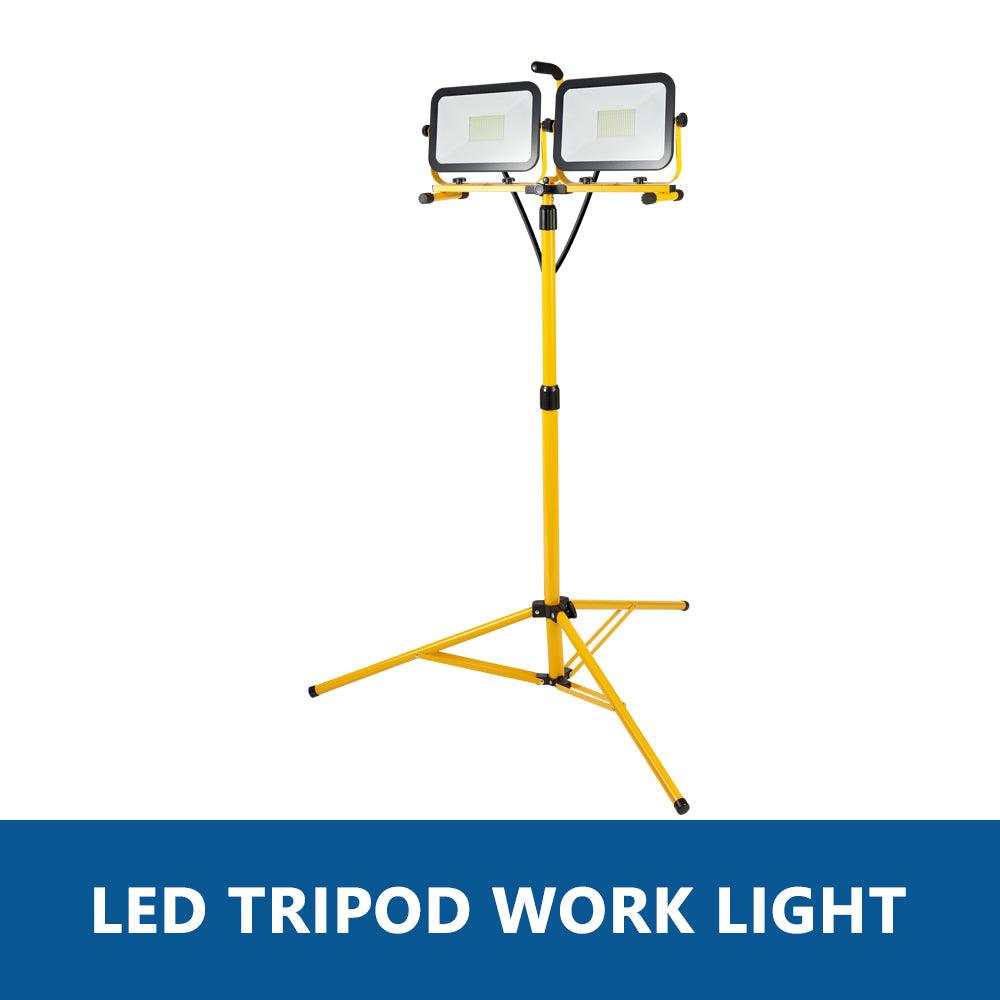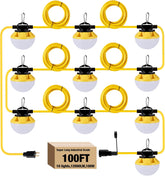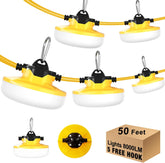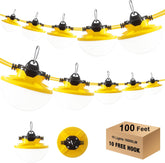-
G GJIA 100W LED Construction String Light Round Series 100FT 12,000LM 2 Prong
- from $76.99
$108.99- from $76.99
- Unit price
- per
-
G GJIA 65W LED Construction String Light Flat Series 50FT 8000LM 2 Prong
- from $49.99
$62.00- from $49.99
- Unit price
- per
-
G GJIA LED Construction Temporary Job Site Hanging Linkable Work Light
- from $67.99
$69.99- from $67.99
- Unit price
- per
-
G GJIA 100W LED Construction String Light Round Series 100FT 12,000LM 3 Prong
- from $96.99
$119.99- from $96.99
- Unit price
- per
-
G GJIA 130W LED Construction String Light Flat Series 100FT 16,000LM 2 Prong
- from $79.99
$106.99- from $79.99
- Unit price
- per
-
G GJIA 250W LED Construction Temporary Job Site Hanging Work Light
- from $119.99
$152.99- from $119.99
- Unit price
- per
-
G GJIA LED Construction Temporary Job Site Hanging Work Light
- from $59.99
$69.99- from $59.99
- Unit price
- per
-
G GJIA 130W LED Construction String Light Round Series 100FT 16000LM 3 Prong
- from $88.99
$119.00- from $88.99
- Unit price
- per
-
G GJIA 50W LED Construction String Light Round Series 50FT 6,000LM 18AWG 2 Prong
- from $46.99
$62.00- from $46.99
- Unit price
- per
-
G GJIA 130W LED Construction String Light Round Series 100FT 16000LM 2 Prong
- from $79.99
$109.99- from $79.99
- Unit price
- per
High Bay Lights
Popular Products
- from $48.99
$53.99- from $48.99
- Unit price
- / per
- from $44.99
$59.99- from $44.99
- Unit price
- / per
- from $164.99
$219.99- from $164.99
- Unit price
- / per

GGJIA LED Linkable Lights series are as follow:
- LED High Bay UFO Lights
- Tripod Lights
- Dock Lights
- Canopy Lights
- Parking Lot Lights
- Wall Pack Lights
- String Lights
- High Bay Linear Lights
- Temporary Work Lights
GGJIA LED Linkable Lights series application:
- Warehouse Lighting
- Barn Lighting
- Garge Lighting
- Gym Lighting
- Shop Lighting
- Workshop Lighting
- Jobsite Lighting
- Factory Lighting
- Parking Lots Lighting
FAQs About Linkable Lights
Q: What do linkable lights mean?
- It simply means that you have the ability to either plug each light directly into an a/c outlet like you would a table lamp, or you have the ability to plug the cord into another, identical light fixture to string the under cabinet lights in succession;
- e.g. you can have 3 lights that are connected to each other and only the last light in the String has to be plugged into the wall, which is super convenient if you don't have a ton of outlets OR don't want to take up 4 outlets when one will do)
Q: What are LED link lights?
LED link lights are modular lighting fixtures that can be interconnected, allowing for seamless and continuous lighting across various spaces.
Q: Can I connect my LED lights together?
Connectors can be used to join two strips together, to expand the length of LED strips or to bypass any obstacles (such as heating pipes) that may get in the way of the LED strip. LED strips can also be connected with a soldering iron.
Q: How do you connect many LED lights together?
The best way to connect multiple LEDs to have the same current driving each LED would be in series. You would connect the 5 LEDs that we had earlier in series and drive them with a constant voltage source, same as before limiting the current with a resistor.
Q: Can you link LED lights?
While LEDs are easy to install, they can be difficult to connect together. To connect two LED light strips together, all you need is a 2 pin connector and some electrical tape.
Q: How to connect 10 LED lights together?
You can connect multiple LED strip lights by soldering or using LED strip connectors. If you prefer ease of installation, go for a strip connector. But for permanent and more robust connections, soldering is best. As per the wiring method, you can go for a series or parallel circuit.
Q: How many LED lights can you connect together?
You can typically connect 8 to 10 times more LED light strings together end to end while only using one plug outlet. Most traditional Christmas mini lights allow you to connect only 4 or 5 sets end to end, but with many LED mini light strings you can connect 40 to 50+ together depending on the light count.
Q: How to connect 6 LEDs in series?
Connect LEDs in Series: For each set, connect the anode of the first LED to the positive terminal of your power supply, then connect the cathode of the first LED to the anode of the next LED. Repeat until all LEDs in the set are connected.
Q: Can LED lights be connected in series?
To power a string or array of LEDs from one LED driver, the LEDs must be connected into an electrical circuit. This can be a series or a parallel circuit.
Q: Can connect 2 different brands of LED lights together?
If they are compatible with each other i.e., both of them have same layout and also both are rated for same voltage, them you can connect two LED Strips from different brands.
Q: How do you connect many LED lights together?
The best way to connect multiple LEDs to have the same current driving each LED would be in series. You would connect the 5 LEDs that we had earlier in series and drive them with a constant voltage source, same as before limiting the current with a resistor.
Q: How do I connect multiple LED lights to one power source?
The alternative to connecting multiple LED strip sections together is to wire them in parallel. This method involves creating independent runs of LED strip sections, each of which are wired directly to the power source.
Q: How many LED can lights can I put on one circuit?
NEC in the US limits a combined lighting / receptacle circuit to a maximum of 12. 12 light fixtures and 0 receptacles, 6 light fixtures and 6 receptacles, 0 light fixtures and 12 receptacles as long as the combination is less than 12. The breaker can be 15A or 25A and that requires 14AWG for 14A and 12AWG for 25A.
Q: Is it better to connect LEDs in parallel or series?
- Is one better than the other… Series, Parallel, or Series/Parallel? The requirements of a lighting application often dictate what type of circuit can be used, but if given the choice, the most efficient way to run high power LEDs is using a series circuit with a constant current LED driver.
- If you look at it from a safety standpoint, Parallel-connected circuits are safer because a single failure in one lamp does not affect the rest of the lighting. You can switch individual lamps on and off without affecting the others, allowing you to customise the lighting to your needs.
Q: How many LED lights can I put in series?
The answer should be the source voltage divided by the voltage drop of 1 LED. So if your source is 12v, and your LEDs have a voltage drop of 3.5, 12/3.5v, gives you 3 LEDs. If the the forward voltage drop of the LEDs was exactly 3 volts, you'd be able to drive 4 of them, and would not need a current limiting resistor.
Q: Are LEDs brighter in series or parallel?
A parallel circuit avoids this problem. Two bulbs in a simple parallel circuit each enjoy the full voltage of the battery. This is why the bulbs in the parallel circuit will be brighter than those in the series circuit.
- Choosing a selection results in a full page refresh.


































